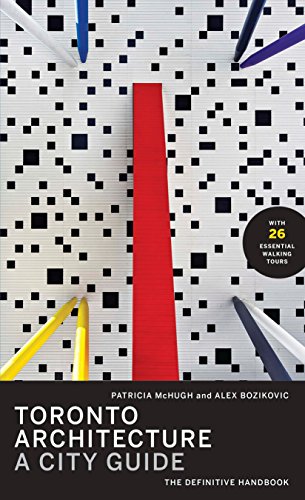Why a Booktrail?
1780s onwards: There are many ways to get underneath a city’s skin and none so much more than its monuments to the past

1780s onwards: There are many ways to get underneath a city’s skin and none so much more than its monuments to the past
Toronto is much older than we think – it’s been hailed as “a city in the making” and “the city that works.”
You can see the story of Toronto via its buildings and there are several eciting trails to trace your way around the city and discover the history and the stories behind the doors to the past
From its early days as a harbourfront settlement to today’s metropolitan and bustling city, Toronto has gone through some fascinating changes. This book showcases 26 trails around the city, each one of them a new pathway to the past, the history and the fascinating story each trail has to tell.
Old stands beside new. Some fingerprints of the past barely visible but important all the same. Look closely as Toronto has a lot of stories to tell. And by following any one of these trails, you’ll discover a whole lot more.
Toronto is much older than we think. After tens of thousands of years of aboriginal occupation of the Lake Ontario shore, the Seneca established a town called Teiagon near the mouth of the Humber River (It stood near today’s Jane Street and Baby Point Road) .
The Fort Rouille remains visible jut barely, on the Exhibition place grounds
Todays city was born in 1793 as a colonial outpost named York. Upper Canada’s first lieutenant governor, John Graves Simcoe, chose the site as his capital for its defensibility and its distance from the American border
The peninsula in the area is not Toronto Island – ideal as it is a well-protected harbour which was vital at the time.
Toronto started to grow – “Toronto is essentially a grid on a lake”
Development of the city’s buildings and new styles:
Immigrants flocked into the city, and industry grew rapidly. The number of factories and the financial district grew at this time – buildings which are now amongst the oldest ones in the city’s. Jarvis Street and Queen’s Park became the places to live
Following this time, brick became the material of choice for buildings of the time:
There was a bit of a rebellion amongst the rich and some wanted to build grand estates in the city – this unplanned development led to a maze of streets – the twists of Dundas Street and College/Carlton Street tell the story
Grand civic structures such as the Royal Ontario Museum built in 1914 were built around this time
The Met Toronto government was born in 1954 and much planning took place which as the new wave of urban renewal – the highways were built and the city started to spread out wards
The city’s growth and development were well underway – the city hall which ressembles an eye if you have a bird’s eyes view, was built in 1965
The Toronto Waterfront has perhaps undergone some of the biggest changes across the years – buildings and cafes have made this a very lovely place to be – areturn says the author to where the city first began…
Author/Guide: Patricia McHugh Destination: Toronto Departure Time: 1790s onwards
Back to Results